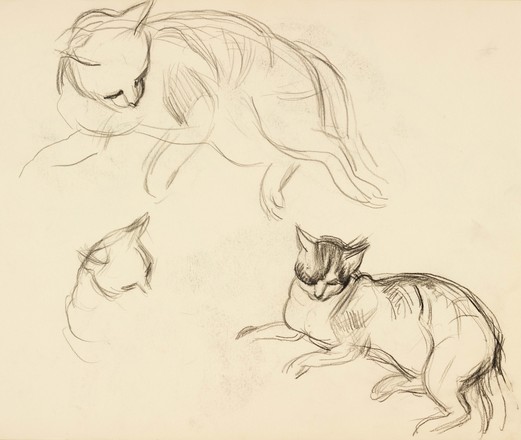Dangerously modern
After briefly attending
Julian Ashton's art school in Sydney, along with fellow students George Lambert
and Sydney Long (to whom she was briefly engaged in 1898), the 23-year-old Thea
Proctor set off for London. There she remained for the next 18 years, focusing
on drawing and painting in watercolours.She also developed an interest in decorative costume work,
particularly designing for the Chelsea Arts Club balls.She produced delicate
paintings on fans and watercolours on silk, influenced at the time by the work
of Charles Conder. Her work was well received at various London exhibitions
prior to World War I.
Proctor returned to Australia
in 1921 and became involved with many projects. She was a painter, a printmaker
and graphic designer. She joined the Society of Artists alongside friend and
colleague George Lambert. She taught design at Ashton’s Sydney Art School and
ran private classes as well. In 1925 she and Margaret Preston held a joint exhibition
in Sydney and Melbourne of brightly coloured woodcuts in scarlet frames.
In Australia Proctor’s work
was considered dangerously modern, particularly her vivid use of colours:
magentas, greens, pinks and purples, striking an exotic presence in Sydney. She
stood out as an Australian artist who did not conform to the enduring
Australian landscape aesthetic. Instead Proctor concentrated on interiors:
‘Of course, it is delightful
to go out on a summer’s day and paint the Harbour but much more exciting really
is to sit down and invent something that is entirely one’s own, even if it is
in a very small way.’*
Footnotes* Thea Proctor,
‘Design’, Undergrowth, Sept/Oct 1926,
p 5
A taste for home
In the 1920s Thea Proctor designed
a number of elegant covers for the journal, the Home, a publication which highlighted the latest interior design,
architecture, art, theatre, literature and fashion. Perhaps an early forerunner
to a contemporary stylist, Proctor developed her reputation as an expert
advisor on taste, fashion, flower arrangement and interior design.
Proctor was in fact one of
the first interior designers in Sydney, having completed by correspondence a
diploma course in interior decoration from a New York school. She advertised
her services as a decorator in the Home magazine.
While continuing to carry out portrait commissions and exhibit at the Macquarie
Galleries in Bligh Street, Sydney, she designed furniture and collaborated with
fellow artists George Lambert and Sydney Ure Smith on a project for Ford Motor
Cars: selecting appropriate colours for cars.
In 1942 she was awarded the Society of Artists’ medal in recognition of her
valuable work ‘in developing taste’ in NSW.



 Back to list
Back to list